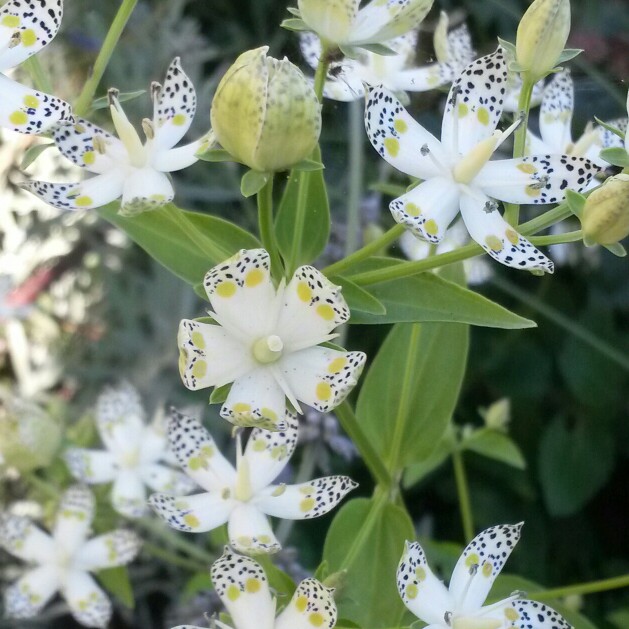
Swertia bimaculata Syn. Ophelia bimaculata
Double Spotted Swertia
Double spotted swertia is a pretty high altitude wildflower native to the Himalayas and China. The leaves are tapered ovate, and the flowers appear on tall stems in Summer right through to mid Autumn.The flowers have 5 white or yellowish-white, purple-spotted petals, each petal having two lime-green spots that are, in fact, nectaries. Self-seeds easily, but is not invasive Flower Colour White | Yellow | Purple Flowering Period Sep | Oct Foliage Not evergreen Growth Habit Clump-forming
Contributed by @schefflera
-
Full sun to partial shade
-
Occasional watering
-
Full Frost Hardy: 5F (-15°C)
-
Moist and free draining
Common name
Double Spotted Swertia
Latin name
Swertia bimaculata Syn. Ophelia bimaculata
type
Biennial or short-lived perennial
family
Gentianaceae
ph
5.0 - 8.5 Acid - Neutral
Plant & bloom calendar
-
Best time to plant
-
When the plant will bloom
full grown dimensions
 0.40 M
0.60 M
0.40 M
0.60 M
Swertia bimaculata Syn. Ophelia bimaculata
Double spotted swertia is a pretty high altitude wildflower native to the Himalayas and China. The leaves are tapered ovate, and the flowers appear on tall stems in Summer right through to mid Autumn.The flowers have 5 white or yellowish-white, purple-spotted petals, each petal having two lime-green spots that are, in fact, nectaries. Self-seeds easily, but is not invasive Flower Colour White | Yellow | Purple Flowering Period Sep | Oct Foliage Not evergreen Growth Habit Clump-forming
Flowering
From Early Summer TO Early Autumn
The beautiful white 5-petalled flowers with purple spots, and each petal having two large lime-green spots, appear from early Summer through to Autumn
Propagating by seed
From Early Spring TO Mid Spring
Swertia bimaculata self-seeds readily.
Planting
From Early Spring TO Late Spring
Plant in moist but free-draining soil, in a sunny or partially sunny spot.








